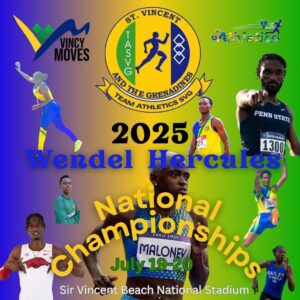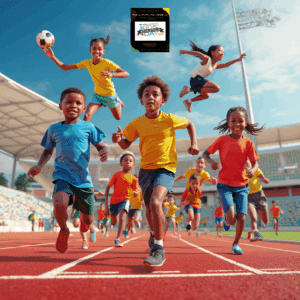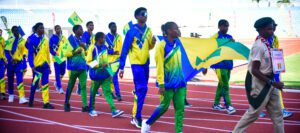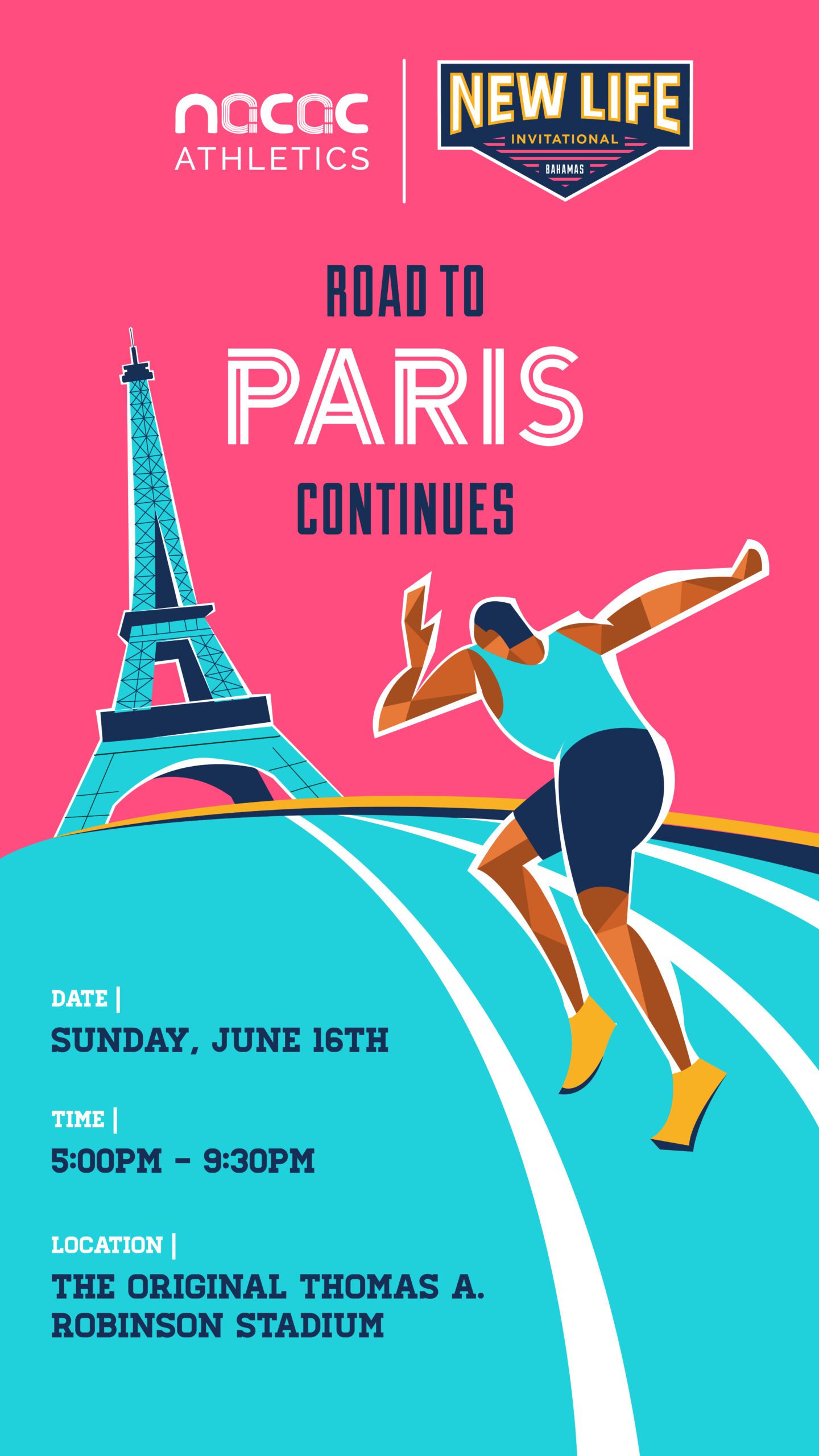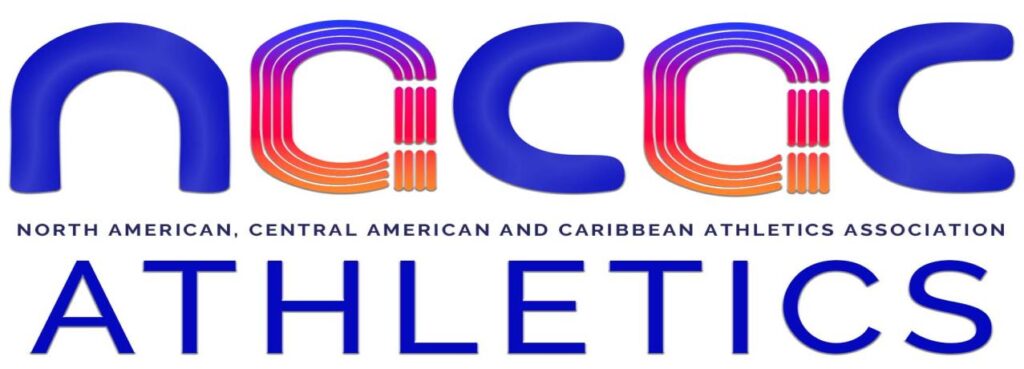The blight of lip service to sport in SVG
Since our very first article in The News newspaper in 1989, we have been at pains to discuss the immense challenges facing sport in St Vincent and the Grenadines. Over the 33 years of publication of this Column, we have brought to light numerous proposals that we believe would be of assistance to anyone genuinely interested in the realisation of an approach to sport that locates the latter in the broad matrix that constitutes our national development strategy.
The Vincentian people must never be seen as a meaningful resource to be twisted and turned into malleable articles, the playthings of politicians and their minions. Instead, we must all be seen as gifted members of our society, possessive of the capacity to think critically and contribute purposefully to our nation.
Nation builders are not only those to whom national awards are given. More than anything, the publicly paraded national awardees are often the recipients of the patronage of the political leadership of the day, seemingly incapable of objective analysis of the broader spectrum of genuine contributors to nation-building.
The truth, hard as it is for some to take, is that more than anything else, governments have a tendency to pay lip service to genuine development. This often results from their own hubristic-driven belief in their own justification of all that they do while governing.
All of us are nation builders. It is perhaps in recognition of this fact that there is often much made of those who are the designated ‘unsung heroes’.
As it is with our people, so it is with our approach to other aspects of national development. Politicians have a tendency to ‘lie through their teeth’, making promises of a better day, every day, as of doling out palliative medications to unsuspecting patients who happen to be the mass of the population of our society.
The popular politically decrepit belief that sport is sheer frivolity, remains a legacy of slavery and colonialism, that, unfortunately, is so entrenched in those who access and wield ‘power’ in Vincentian society, that they are immune to any suggestion that we could do otherwise and have many of our people contribute to nation-building through sport.
The patronage strategy of announcing the occasional Vincentian sports ambassador has not worked. There has as yet not been any sports ambassador provided with a clear policy framework of precisely what the designation, ‘sports ambassador’, means and what exactly is expected of them after having been declared recipients.
For many of the recipients of the ‘sports ambassador’ designation, it does not ‘change the price of eggs’. Indeed, it falls in line with the lip service so characteristic of Vincentian politics. It is a form of ‘political mamaguy’.
Vincentian sports facilities
Many of the sports practised in St Vincent and the Grenadines remain at the mercy of the government regarding appropriate facilities for their adherents to use on a consistent basis for training and competition.
Over the past several years we have consistently lamented the poor state of affairs in our country regarding adequate sports facilities.
It is the norm in this country for successive governments to boast of the number of playing fields and hard courts they have constructed across the country. What is often not stated in the boasting is the fact that the choice of location of the facilities is more politically motivated than anything else. There is hardly any engagement of national sports associations which are members of international federations. This means that the facilities may well be poorly located and lacking in compliance with the stipulations of the respective international sports federations.
Our politicians have somehow managed to convince themselves that the electorate would be impressed and remain supportive once they are provided with something, anything. So it is that we often find that the constructed sports facilities lack appropriate equipment, proper storage, trained maintenance staff and a comprehensive programme of usage and maintenance. This is the reason we can travel around St Vincent and the Grenadines and see, first-hand, the deplorable state in which the majority of our sports facilities are in at present.
Many of our hard courts have deteriorated to the point of being unfit for competitions, athletes risk serious injury when daring to use them.
In many cases, too, the fencing around outdoor playing facilities have been destroyed, either through rusting or human abuse.
We must admit that in several cases the communities are themselves the ones abusing the facilities. There is no reason for destroying the fences by deliberately making holes or standing on them to the point where they form part of the ground around the hard court. In some cases, the toilets and face basins are deliberately broken.
Interestingly, the one distinguishing feature between facilities built and maintained by the National Lotteries Authority (NLA) and those under the National Sports Council (NSC) is maintenance. But then again, the NSC blames inadequacy of funding for maintenance, a problem that does not now seem to plague the NLA.
The Blight of Indoor Sports
In today’s world, Table Tennis, Boxing, Track Cycling, Gymnastics, Squash, Netball, Basketball, Volleyball, Taekwondo and Karate, are all indoor sports requiring special surfaces. Admittedly, some can and do use the same surfaces.
In St Vincent and the Grenadines, Only Squash and Gymnastics have indoor facilities available to them. The Cecil Cyrus Squash Complex, built through a coalition of sorts and now also home of the NLA serves as the home of the sport for local and regional competitions. It boasts two international standard courts and one practice court.
The Dolphin sports organisation has been fortunate to have been given the hangar that belonged to Mustique Airways, owned and operated by Johnathan Palmer and his family. This facility has been transformed into the veritable home of Gymnastics.
In the case of both Squash and Gymnastics, the leaders of the sport, the athletes and coaches ought not to be envied. While they have indoor facilities and these are used for both training and competition, they are well below what is needed if we are serious about the development of the sport. Indeed, they are woefully inadequate, if we are honest.
One training court does not allow for increased numbers to get into the sport of Squash as well as not an option for international competition of an acceptable magnitude.
In respect of Gymnastics, whilst some sportspeople and associations have expressed their disappointment at such a seemingly large facility being allocated to a single sport, one visit would be enough to see its gross inadequacy for the growth and development of the sport. Gymnasts need space for runways and for the different disciplines to be practised at the same time, as one observes at major Games. They need greater distance between the existing equipment. The current size and configuration of the facility do not offer gymnasts the best training and competition options that would readily enable them to attain the requisite preparation they would need for the disciplines of choice in international competition.
We must all be appreciative of the fact that both Squash and Gymnastics have been able to accomplish given the existing limitations under which they seek to grow and develop athletes. Squash, of course, has been played here much longer than Gymnastics and has a better record to show for that.
All of the other indoor sports are currently training and competing on sport facilities that are not used for international competition, putting their practitioners at great risk to themselves, especially in respect of injury and longevity in the sport.
There is little chance of us ever getting a velodrome for potential cyclists to become involved in track cycling. In any event, a velodrome is very costly and requires tremendous maintenance. Give the current modus in respect of the provision of sport facilities we might as well not give a velodrome much consideration.
Basketball and Netball are two of our most popular sports and both suffer from the chronic lack of adequate facilities. A quick encounter with some of the better basketballers and netballers of yesteryear would all one to observe the problems they continue to suffer with their knees. These resulted from playing on concrete and/or asphalt for far too long. They have had no recompense, nor should they expect any. It was their choice.
While Table Tennis is played, increasingly, all around St Vincent and the Grenadines, thanks to the Foundation started by Georg Silberschmidt and supported by the local Table Tennis Association, the sport does not have a home. Over the past several years the leaders and practitioners of the sport have been literally ‘moving from pillar to post’, begging for and utilising every space on offer, regardless of the inadequacy these facilities may have for the growth and development of the sport.
Karate and Taekwondo, the martial arts sports, continue to seek out venues for training and competition, at times, having to pay rent, the funds for which have to be passed on to the athletes and their families.
The foregoing is a startlingly incredible snapshot of the insensitivity of successive governments to affording the youth of this country better opportunities for getting into sport and perhaps, developing into world-class athletes.
We are blighting the opportunities for the very children and youth we so often claim we love and wish to see develop to their full potential.
In some respects we can say, without fear of contradiction, that our successive governments have been denying much of what is otherwise seen as the norm, for the children and youth of our nation. They boast of providing facilities but seem not too concerned about their inadequacies and the tragic consequences of ‘the big lie’ that it is in reality.
Hope in other options
But there is hope.
National sports associations can do better. They can and must come together and insist that they need at least one major indoor sports facility and set about seeking assistance from people, agencies and institutions around the world.
Of course, the major thrust must begin with the associations themselves. They must pressure successive governments to engage them in the broader sport development process. Sport must not be a political tool merely to win votes while duping the youths and the electorate into believing that what is on offer is a genuine commitment to them instead of the sham that currently obtains.
Football has had the benefit of the FIFA projects regarding facilities and equipment. But the local football fraternity can collaborate with some of the other sports to craft a strategy that could yield benefits by way of an expansive facility that can serve as an indoor sports facility, with inputs from other sporting bodies.
No national sport association should ever allow itself to be solely dependent on government for all of its needs. It should always strive for independence from political interference and overt influence from government or any other segment of society.
However, government has a responsibility to its citizens in respect of the provision of appropriate and adequate facilities for education, health, housing and sport, along with all that is considered integral to the holistic development of people. Governments must also see people involvement in the broader national development process as a fundamental right of the citizenry. In this regard, national sports associations must be integrated in the planning, design and implementation of appropriate and adequate sports facilities of St Vincent and the Grenadines.

